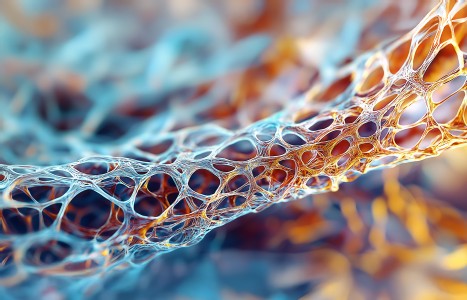Think of your most difficult patient – the one you try to motivate and work so hard with to develop a realistic treatment plan with achievable and measurable goals. Week after week, you see this patient struggle, sinking deeper into hopelessness as their health and quality of life continue to worsen. What if there was something else you could do that could change their outlook and their life? The solution is as simple as an automated program.
| Digital ExclusiveReview of PBM Contraindications (Pt. 2)
Editor's Note: Part 1 this article (December 2022 issue) reviewed the North American Association of Laser Therapy laser therapy contraindications regarding cancer and pregnancy.
Epileptic Seizures
Pulsing red light in the 5-10 Hz range can trigger epileptic seizures.16 Many laser therapy devices deliver pulsing visible light, so laser should be used with extreme caution in epileptics.
Internal Pacemakers
The use of therapeutic laser over internal pacemakers is frequently considered to be contraindicated; however, this is a mistake. The pacemaker devices are encased in metal, and therapy laser is light, which would be reflected from the metal.17 For the same reason, it is safe to apply laser therapy directly over metal implants, plates, screws, and even metal surgical staples.
The Thyroid Gland
The thyroid gland is a delicate structure and the high concentration of the element iodine in the thyroid tissue readily absorbs infrared laser photons. It is recommended to avoid treating over the thyroid with therapeutic laser; however, treatments can safely be delivered over the posterior, lateral and anterolateral sides of the neck.
Studies may indicate that PBM treatments using very low power and dosage settings could be beneficial for hypothyroid patients,18 but this is developing work and the practicing clinician is advised to keep the laser away from a patient's thyroid.
Open Growth Plates
PBM treatments can safely be delivered over open growth plates to help young patients suffering from Osgood-Schlatter's disease and sports injuries. Laser does not initiate heating inside the joint, and the collective body of evidence from both human and animal patients indicates safety.
One investigator irradiated growth plates in young rats, and the animals were examined histologically after 6-12 treatments. There were no observable differences between the treated group and the control group.19
Corticosteroid Injection Sites
For patients receiving corticosteroid injections, PBM treatments are not recommended directly over the injection site for seven days because a repeatable, very painful reaction occurs. However, laser can be given distant to the steroid injection site.
If the patient is taking oral steroids, they have a slightly elevated chance of post-treatment soreness, but it does not prevent treatment. The soreness can be mitigated with adequate hydration.
On the other hand, laser therapy can be performed immediately after and directly over regenerative medicine injections such as platelet-rich plasma (PRP) and stem cells. The laser can help with post-injection pain, and early studies indicate a synergistic effect between the two treatments.
Tattoos
PBM treatments should not be delivered directly over tattoos, as the ink will absorb the laser at the skin surface and instantly become painfully hot. This also means photons are not penetrating to deeper tissues where they are needed.
To manage pain under tattoos, treat around the uninked skin at the periphery, perform a tissue pull to get the tattoo out of the way, or target the area from another direction.
Malpractice Considerations
Photobiomodulation is an excellent modality because it is effective for a wide variety of conditions, can help with managing pain, inflammation and damaged tissues, and has few contraindications. But in the event of an adverse event, advice from a malpractice specialist is warranted.
I always advise the clinician to contact their malpractice insurance company whenever there is an adverse reaction, an odd patient encounter, the patient says something (e.g., "I'm going to contact my lawyer"), or any number of situations that could initiate a malpractice action.
If served with a malpractice action, it is important that they report it immediately to their malpractice insurance carrier to avoid any issues. Some companies place a time limit on reporting, while others simply say to report the claim as soon as reasonably possible. Records need to be collected and preserved – never change or alter clinical records in any way.
The clinician should not discuss the claim with anyone else other than their assigned claim representative and appointed attorney (and whomever else the attorney designates); should refrain from any emails or texts containing information pertinent to the claim; and should never discuss via social media.20
References
16. Photosensitive Seizures. Cedars-Sinai.org.
17. Tuner J, Hode L. The Laser Therapy Handbook. Sweden: Prima Books, 2007: p. 292.
18. Firouzi A, et al. Combined effect of low-level laser treatment and levothyroxine on wound healing in rats with hypothyroidism. J Lasers Med Sci, 2018 Fall;9(4):268-273.
19. Cheetham MJ, Young RS, Dyson M. Histological effects of 820 nm laser irradiation on the healthy growth plate of the rat. Laser Ther, 1992.4(2):59-64.
20. Dan Zimmerman, RPLU, CIC Vice President, Chiropractic Insurance Programs, NCMIC.


